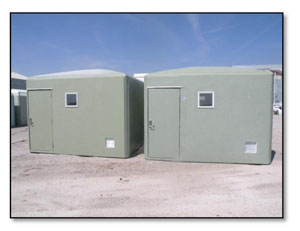Natural Gas Storage Field Equipment SheltersCase Study
Natural Gas Wellhead Separators
Throughout America, underground fields provide local storage of natural gas supplies in rural areas outside of major metropolitan cities. Gas companies utilize these fields to lower the stress on our limited gas pipelines and increase availability near the point of usage versus at the point of collection. Gas stored deep underground mixes with water which can be salty and corrosive, so wellhead separators are installed at the wellhead to separate the gas from water and other impurities before it is processed.
Wellhead Separators
Shelter Works worked on a project with Randy Cunningham, Sales Rep at Control Equipment Sales Company (CES), where their customer, a natural gas supplier, replaced smaller tanks with larger, higher-capacity tanks that allowed for greater efficiency. As demand for gas increases, more gas and water flow in and out of the field, creating the need for higher-velocity wellhead separators to deal with the greater volume of water.
"Shelter Works builds such a high-quality, structurally sound shelter, the engineers were very happy to specify the Shelter Works buildings." - Randy Cunningham, Sales Rep
Improved Safety
“Safety and overall lifetime cost were top priorities for this project. Metal buildings tend to corrode quickly in this environment, while fiberglass is easy to clean and maintain. Shelter Works builds such a high-quality, structurally sound shelter. The engineers were happy to specify the Shelter Works buildings,” Cunningham explained. “They did look at other suppliers, but in the end, they chose Shelter Works. We have had a long-standing relationship with the people of Shelter Works, so we knew they would deliver a strong product.”
Shelter Works worked with Cunningham and his client to design and build twenty-two 12’ x 14’ x 10’ fiberglass buildings. In addition to upgrading the equipment, the engineers wanted improved safety features to protect the equipment and the people who service it. They added wood reinforcement within the walls for more structurally sound buildings. They also added strategically placed windows for improved visibility within the shelters.
Energy Efficient
Because this storage field is in a cold weather climate, they also specified two-and-a-half-inch foam in the walls and 3-inch foam for the roof. The engineers used the inherent insulating properties of fiberglass and additional insulation to trap heat generated by the equipment in the building, keeping the shelter warm inside with the need for electricity.


